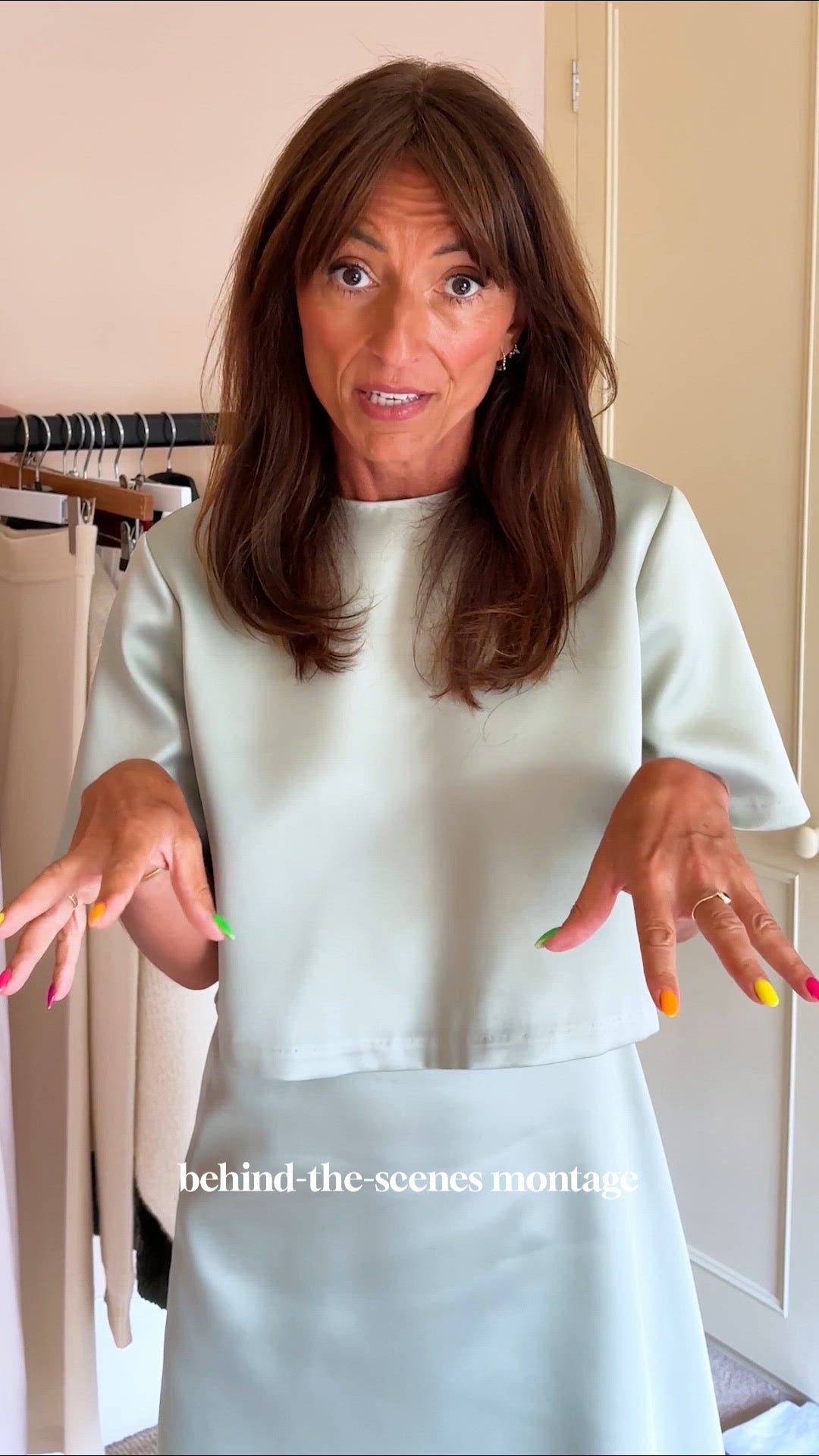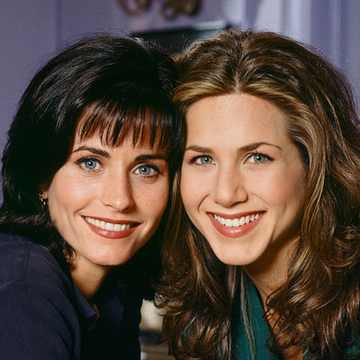Heat protection is a beauty no-brainer, right? Like SPF is to sunshine, a damage-shielding product is something you should always, always apply before exposing your precious hair to heat. Except, it’s not always that simple.
Just as with sunscreen, it’s easy to get heat protection wrong (yes, Gwyneth and your ‘I just dab SPF where the sun really hits’ approach, we’re looking at you).
Let’s be very clear: used properly, heat protection products are an excellent barrier against avoidable thermal damage from hairdryers, curling tools and straighteners. However, there are common errors which could lull you into a false sense of security or, even worse, actually cause damage to your hair.
What to read next
To find out more, we asked the experts to break it all down - so your hair won’t.
Does heat protection really work, and how do we know?
As with SPFs, we hear a level of scepticism about whether heat protection products actually work. The short answer here is: yes!
‘Any leave-in hair product will offer a small amount of protection from heat compared to a naked hair strand, but products marketed as heat protectors must include ingredients that have been shown to offer more meaningful levels of protection,’ says A-list stylist and hair health expert Tom Smith.
‘They are often tested to specific temperatures, eg ‘up to 200°’” – useful since most electricals now have specific, adjustable heat settings to reduce damage.
What happens if I don’t use heat protection?
‘Heat protection is absolutely essential,’ says Jonathan Andrew, Fudge Professional global hair ambassador. ‘Your hair is already under daily stress from pollution, UV exposure, and free radicals. Add heated appliances on top of that, and the cuticle becomes vulnerable to damage. Heat protectants act as a barrier, reducing the amount of moisture lost from inside the hair shaft and helping to shield the cuticle from direct heat.’
These products have huge, tangible benefits for your hair’s condition. ‘As well as being a buffer for damage, they add more nourishment to keep the hair supple,’ says Tom. ‘By creating a less penetrable barrier for the heat, they shield the delicate cuticle layer from becoming degraded.’
So where can I go wrong with heat protection?
There are two basic types of heat protection, which need to be used differently. Get that bit wrong, and it can backfire, explains Jonathan.
‘First, there are wet heat protection products (usually sprays, but can also be creams or oils) which are applied to damp hair after washing. These offer protection as you blow-dry and style,’ he says.
‘Second, you have dry heat protectants that are designed for restyling on day two or when using additional tools like curling tongs or straighteners after blowdrying.’ Unlike wet sprays, these have ultra-fine aerosol textures which dry almost immediately.
(You'll find some of our favourites for both types at the end.)
This might sound straightforward enough, but there are several common heat protection errors that could lead to you unwittingly damaging your hair - the exact of what you’re trying to achieve. Here's what to avoid, and how to fix the problem.
Mistake 1: Using hot tools straight after applying wet heat protection sprays
Spraying this type of product onto dry, day-two hair and immediately using straighteners or curling wands is a huge no-no. Beware the sizzle! ‘Electrical tools can literally boil wet protection products (and water) on contact, and risk totally compromising the integrity of the hair fibre,’ warns Tom. ‘This can cause singeing, weakness or breakage, or even make your colour fade instantly.’
FIX: Dry heat protection sprays are a safer option for dry, day-two hair as they evaporate so rapidly. If want to use wet sprays on second-day hair, ‘gently dry the product in first, using medium or cool air from your hairdryer,’ says Tom. ‘Alternatively, apply your protector, then leave it to dry while doing your makeup, before returning to your heat styling.’
Mistake 2: Not waiting until your blowdry is finished
Your arm is aching too much to get your hair bone dry, and you’ve already applied a leave-in heat protector before starting your blowdry. Surely you’re safe to switch from your hairdryer to your irons? No - the risk of boiling your barnet holds true if your hair is still a bit damp. ‘When water inside the hair shaft is heated too fast, it can swell and cause the cuticle to crack, like when boiling water inside a sealed container,’ says Jonathan.
FIX: Be patient and blowdry thoroughly before using a hot tool like irons or a curling wand. ‘Never apply "direct" hot tool heat to hair that does not feel totally dry to touch,’ says Tom. And if there’s even a hint of a sizzle, stop immediately.
Mistake 3: Using a product that’s wrong for your hair
If you choose a leave-in protection formula that doesn’t suit your hair texture, it’s hard to apply enough to protect you from the ferocity of hot tools. Cue poorly-protected hair, and a false sense of security.
‘The best heat protector for you is the one you can use the most of,’ explains Tom. ‘Protectors in cream or oil forms will likely make your hair heavy, lank or greasy before they give enough protection for heavy, direct heat use.’
FIX: Choose the lightest formula you can for your hair type. ‘A lightweight, water-based protector will allow you to use it liberally through more of your hair, and achieve more protection,’ says Tom.
‘A cream-based protector may be fine for just a blowdry, as hot hairdryer air isn’t as harsh on the hair fibre as the direct heat from a straightening or curling plate,’ he adds. ‘But for extensive straightening, a dedicated lightweight protector applied liberally is far better.’
Mistake 4: Not topping up protection between styling sessions
You might assume that a heat protection spray applied before a blowdry will see you through to your next wash. Not quite. ‘Heat by nature will evaporate some of the products applied,’ says Tom.
FIX: While you won’t lose the initial protection completely, ‘reapplying before subsequent heat applications is always a good idea,’ says Tom. Ensure any top-up spray is fully dried in before using hot tools. An even better idea would be to use a dry heat protection spray to shore up the leftover protection, as this should dry almost instantly.
Mistake 5: Relying on dry heat protection alone
First, let’s focus on the positives of these products. Jonathan explains: ‘Dry heat protectors are great if you want to add curls, smooth frizz, or touch up your blow-dry the next day.’ Tom adds: ‘Many will have polymers and other ingredients that help your heat styling hold better and last longer. This, in a way, also protects your hair as it reduces the need for further touch-ups on subsequent days.'
However, our experts agree they don’t offer optimum protection on their own. ‘They work best in combination with a leave-in applied to damp hair and dried in,’ says Jonathan.
FIX: Add heat protection to your blowdry, then use a dry protector too. ‘Think of it as building a base layer of defence, then reinforcing it later,’ says Jonathan.
Tom concurs: 'The more layers of protection between your heat applications, the more protected your hair is. The limit is when your hair begins to feel overburdened with product or stiff. Finding the individual balance that suits your hair requires a mindful approach and careful applications. Use a little and build up slowly.’
Mistake 6: Repeated heat restyling
Heat protection isn’t a get-out-of-jail free card if you’re using electricals to continually restyle hair, day after day. ‘Going over hair that’s already been previously heat styled will always be more harsh, thanks to the repeated forming and resetting of the hair bonds,’ says Tom.
FIX: Wash your hair sooner. A shampoo and conditioner will reset your its internal bonds, so you can then shape your hair with far less harm. Tom also recommends balancing out heat damage with additional pre-shampoo care.
‘Olaplex No.3 (primed with No.0 when you want a stronger dose in one go), will help to "mop up" the residual damage caused by the heat and wear and tear of home styling,’ he advises. ‘Try to go one-for-one; for every heavy-duty styling session, leave it on for 10 minutes.’
If you do need to do touch-ups, ‘turn down your heat when doing so,’ he advises. ‘The new Cloud Nine tools offer a revive mode which uses lower temperatures and vibrations to aid touch-up heat styling at a lower heat, with less friction or tension.’
The bottom line...
While heat protection doesn't make hair invincible, it will really reduce damage if it's used properly – especially if you also use smart tools, lower temperature settings and reparative care to balance damage. And remember, there's always heatless curling to get you bouncy hair without any thermal damage at all...































